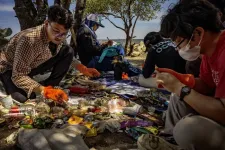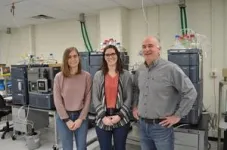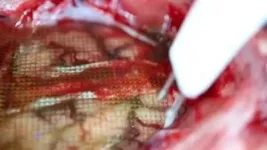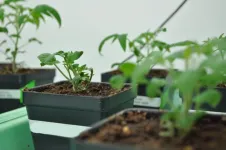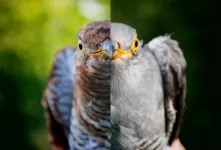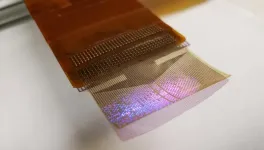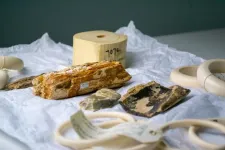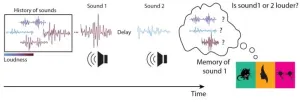The research, led by scientists from a dozen different universities in the United States of America, Australia, the Philippines, New Zealand, Estonia, Chile, Sweden, Canada, and the United Kingdom, found that 56 global companies are responsible for more than half of all branded plastic pollution. The Coca-Cola Company was responsible for 11% of branded waste, followed by PepsiCo (5%), Nestlé (3%), Danone (3%), and Altria/Philip Morris International (2%). The top companies identified produce food, beverage, or tobacco products.
The five-year analysis used #BreakFreeFromPlastic brand audit data from 1,576 audit events across 84 countries. Brand audits are citizen science initiatives in which volunteers conduct waste clean-ups and document the brands found on the pollution collected. Over five years, more than 200,000 volunteers submitted data through Break Free From Plastic or 5 Gyres’ TrashBlitz app.
The strong relationship between plastic production and pollution, across geographies and widely varying waste management systems, suggests that reducing plastic production in the fast-moving consumer goods sector is a viable solution to curb global plastic pollution. As world leaders negotiate a Global Plastics Treaty at INC-4 this month in Ottawa, Canada, this research serves as a tool to support a high-ambition legally binding treaty that includes provisions on corporate accountability, prioritizing plastic production reduction measures, and promoting reuse and refill systems.
Read the paper here.
Co-Author Quotes:
“When I first saw the relationship between production and pollution, I was shocked. I wanted to throw up, it was the reality of my worst nightmare. It means that producers big and small are toeing the line, despite all the things big brands say they are doing, we see no positive impact from their efforts. But on the other hand, it gives me hope that fast-moving consumer goods companies reducing their plastic production and shifting towards more durable and reusable products would have a strong positive impact on the environment.”
- Win Cowger, Research Director, The Moore Institute for Plastic Pollution Research
“Our study underscores the critical role of corporate accountability in tackling plastic pollution. We, as individuals, are not responsible for the plastics crisis; the onus lies on these 56 global companies to take decisive action. I urge world leaders at INC-4 to listen to the science, and to consider the clear link between plastic production and pollution during negotiations for a Global Plastics Treaty.”
- Dr. Lisa Erdle, Director of Science & Innovation, The 5 Gyres Institute
“This scientific study affirms what activists and communities impacted by plastic pollution have been saying for years: the more plastic is produced, the more plastic is found in the environment. It’s that simple. Yet again, plastic polluters like The Coca-Cola Company, PepsiCo, and Nestlé continue to fail on their voluntary commitment to reduce their plastic footprint. We need a legally binding Global Plastics Treaty that mandates significant cuts in plastic production and stops corporations from flooding the planet with single-use plastic.”
- Sybil Bullock, Associate Campaign Manager, Break Free From Plastic
“The research identifies the top 56 multinational companies contributing to global branded plastic litter. Past studies have ranked countries like the Philippines, Indonesia, Sri Lanka, Bangladesh, Nigeria, etc. among the top sources of plastic waste into the ocean. This has led to a narrative in social media that blames poor countries for global plastic pollution, ignoring the fact that around the 1960s global companies flooded developing countries with cheap, single-use plastics displacing traditional biodegradable materials and sustainable reuse-refill systems which, in the case of the Philippines, dated back to the 16th century. The current study focuses instead on the role of corporations and global plastic production.”
- Dr. Jorge Emmanuel, Adjunct Professor and Research Faculty Fellow, Institute of Environmental & Marine Sciences, and College of Engineering & Design, Silliman University
“This research provides the first quantification of global producer contribution to branded plastic pollution. The findings suggest that single-use packaging significantly contributes to branded plastic pollution. This data can help inform ways to address plastic production and reduce plastic waste ending up in the environment.”
- Dr. Kathy Willis, Postdoctoral Fellow from CSIRO, Australia’s national science agency
###
About Break Free From Plastic (BFFP)
#BreakFreeFromPlastic is a global movement envisioning a future free from plastic pollution. Since its launch in 2016, more than 2,000 organizations and 11,000 individual supporters from across the world have joined the movement to demand massive reductions in single-use plastics and push for lasting solutions to the plastic pollution crisis. BFFP member organizations and individuals share the values of environmental protection and social justice and work together through a holistic approach to bring about systemic change. This means tackling plastic pollution across the whole plastics value chain—from extraction to disposal—focusing on prevention rather than cure and providing effective solutions. www.breakfreefromplastic.org.
About The 5 Gyres Institute
The 5 Gyres Institute (5 Gyres) is a leader in the global movement against plastic pollution with more than 10 years of expertise in scientific research, engagement, and education. With the original goal of answering a few key scientific questions about ocean plastics, co- founders Marcus Eriksen and Anna Cummins led 19 research expeditions in all five subtropical gyres, as well as many of the world’s lakes and rivers. 5 Gyres continues to lead with scientific research to drive upstream solutions through education, advocacy, and community building. Learn more at 5gyres.org and @5gyres.
Special Note to Reporters
More information, including a copy of the paper, can be found online at the Science Advances press package at https://www.eurekalert.org/press/vancepak/. Several scientists who contributed to this paper will be present at INC-4 and available for interviews upon request.
END
